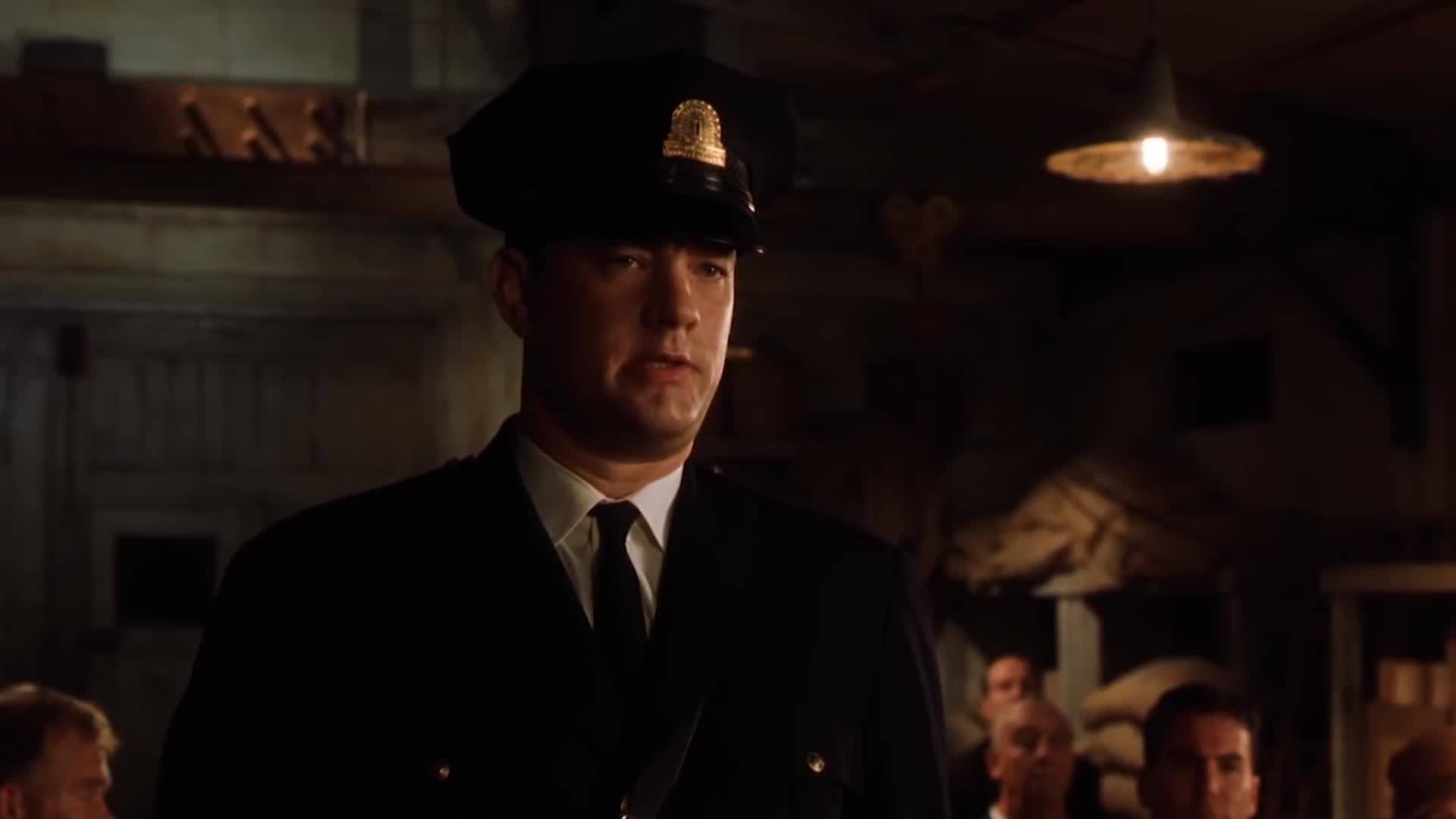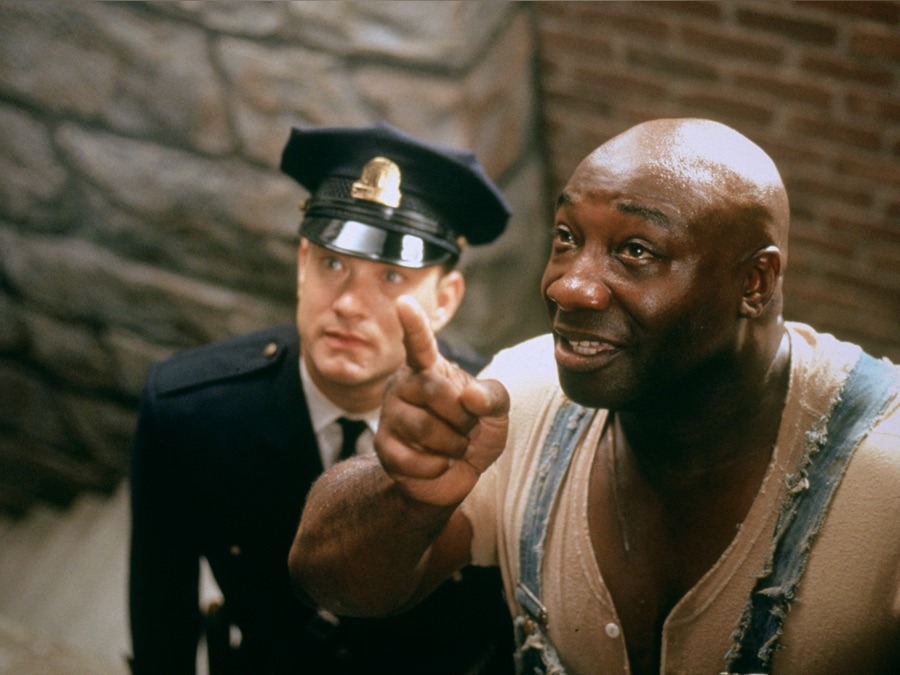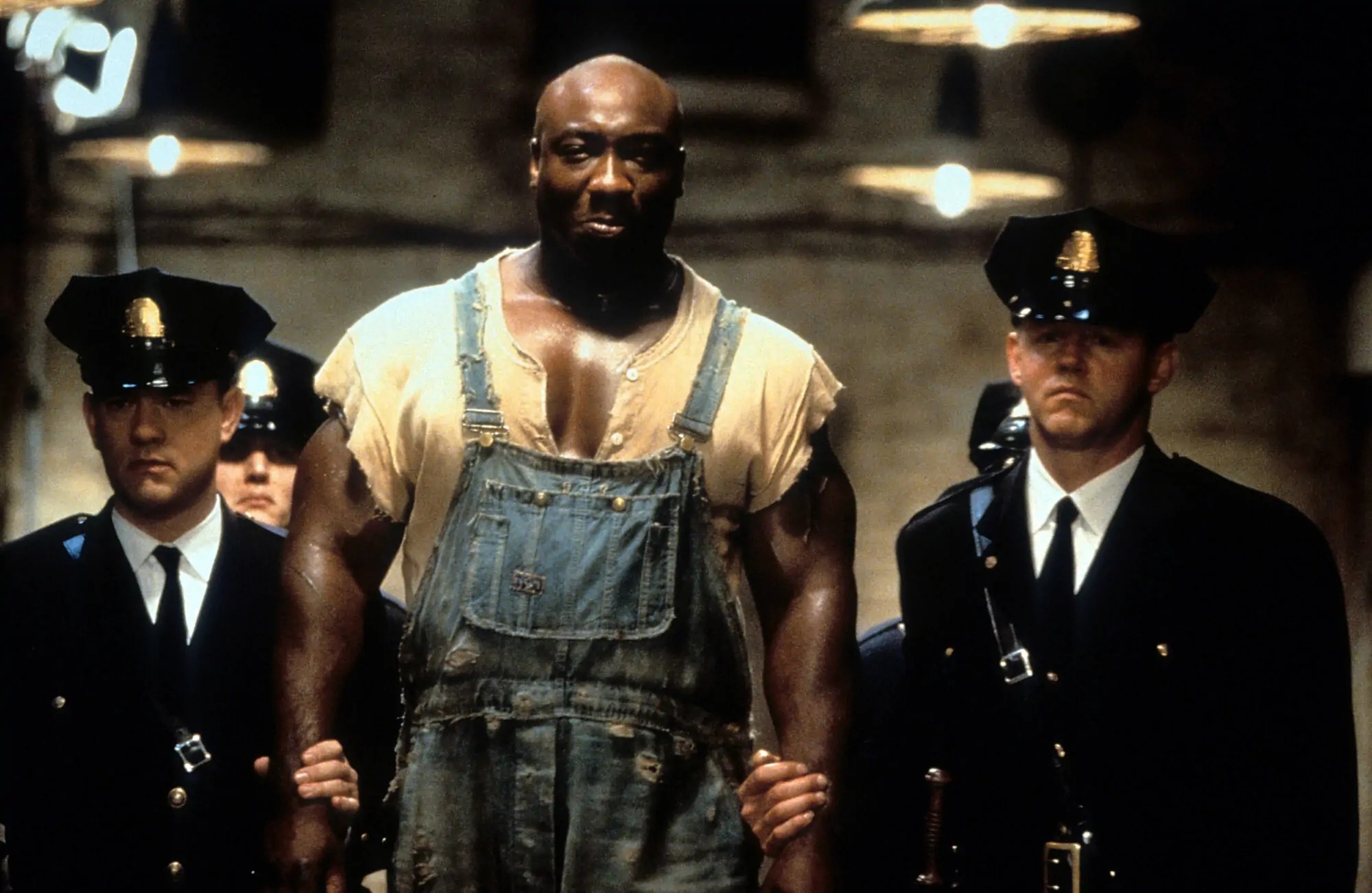The Green Mile (1999)

“The Green Mile,” directed by Frank Darabont and released in 1999, is a poignant drama that masterfully blends elements of crime, supernatural phenomena, and deep human emotion. Based on the novel by Stephen King, the film features an impressive cast led by Tom Hanks and Michael Clarke Duncan, and it delves into themes of morality, compassion, and the complexities of human existence within the confines of a death row prison.
Set in the 1930s, “The Green Mile” takes place on death row at Cold Mountain Penitentiary, where the inmates await execution. The story is narrated by Paul Edgecomb (Tom Hanks), the head guard, who recounts the events surrounding the arrival of a new inmate, John Coffey (Michael Clarke Duncan). Coffey, a towering man with a gentle demeanor, has been convicted of the brutal murder of two young girls. However, as Paul and his fellow guards come to know him, they discover that Coffey possesses a miraculous gift: the ability to heal others.
The film unfolds through a series of events that challenge the perceptions of justice and morality. Paul becomes increasingly aware of Coffey’s innocence, leading him to question the integrity of the judicial system. The narrative intricately weaves together the lives of various characters, each grappling with their own moral dilemmas and the weight of their choices.
The character of Paul Edgecomb, portrayed by Tom Hanks, embodies empathy and humanity. As a prison guard, he is initially depicted as a figure of authority, but his interactions with Coffey reveal a deeper, more compassionate side. Hanks delivers a nuanced performance, showcasing Paul’s internal conflict as he confronts the harsh realities of his job and the moral implications of executing an innocent man.
Michael Clarke Duncan’s portrayal of John Coffey is nothing short of remarkable. His performance brings depth to a character who, despite his physical size, exudes vulnerability and kindness. Coffey’s profound ability to heal reflects his purity and innocence, contrasting starkly with the cruelty of the world around him. Duncan’s performance earned him widespread acclaim and a nomination for an Academy Award, solidifying his role as one of the film’s most memorable characters.
Supporting characters, including guards like Brutus “Brutal” Howell (David Morse) and the eccentric inmate Mr. Jingles (a mouse), enrich the narrative. Each character is well-developed, contributing to the overarching themes of friendship, redemption, and the struggle between good and evil.
At its core, “The Green Mile” explores profound moral questions surrounding justice, punishment, and the human condition. The film challenges viewers to contemplate the nature of guilt and innocence, as well as the ethical implications of capital punishment. Through John Coffey’s character, the film emphasizes the idea that true innocence can exist even in the darkest of circumstances.
The film also examines the complexities of human relationships. The bond that forms between Paul and Coffey transcends the traditional roles of guard and inmate, revealing the shared humanity that exists between them. This connection serves as a powerful reminder that compassion and understanding can thrive even in the most desolate environments.

The supernatural aspect of “The Green Mile” adds a layer of intrigue and depth to the story. Coffey’s ability to heal others raises questions about the nature of good and evil, suggesting that there are forces at play beyond human comprehension. The film’s portrayal of miracles juxtaposed with the brutality of the death penalty creates a haunting atmosphere, inviting viewers to reflect on the intersection of faith and reality.
Frank Darabont’s direction is masterful, creating a visually striking and emotionally resonant film. The cinematography captures the bleakness of the prison setting while also highlighting moments of beauty and hope. The use of lighting, particularly in scenes involving Coffey’s healing powers, enhances the film’s emotional impact.
The pacing of the film allows for an immersive experience, as viewers are gradually drawn into the lives of the characters. Darabont skillfully balances moments of tension with quieter, introspective scenes, creating a rhythm that keeps audiences engaged.

The score, composed by Thomas Newman, adds another layer of emotional depth to the film. The haunting melodies complement the narrative, enhancing the feelings of sorrow, hope, and redemption. Newman’s music serves to underscore pivotal moments, guiding the audience’s emotional responses and enriching the storytelling experience.
Upon its release, “The Green Mile” received critical acclaim, praised for its powerful performances, emotional depth, and thought-provoking themes. It was nominated for several Academy Awards, including Best Picture, and remains a beloved classic in the realm of film adaptations of literary works.

The film’s exploration of profound moral issues continues to resonate with audiences, sparking discussions about justice, empathy, and the human experience. “The Green Mile” has left an indelible mark on cinematic history, celebrated for its ability to intertwine elements of drama and fantasy while tackling complex societal issues.
In conclusion, “The Green Mile” is a deeply moving and thought-provoking film that invites audiences to reflect on the complexities of morality and the nature of humanity. Through its unforgettable characters, masterful direction, and rich themes, the film transcends the boundaries of traditional storytelling. Tom Hanks and Michael Clarke Duncan deliver standout performances that resonate long after the credits roll, making “The Green Mile” a timeless exploration of love, loss, and the enduring power of compassion. As both a haunting tale and a poignant reminder of our shared humanity, the film continues to touch the hearts of viewers, affirming its place as a modern classic in cinema.











